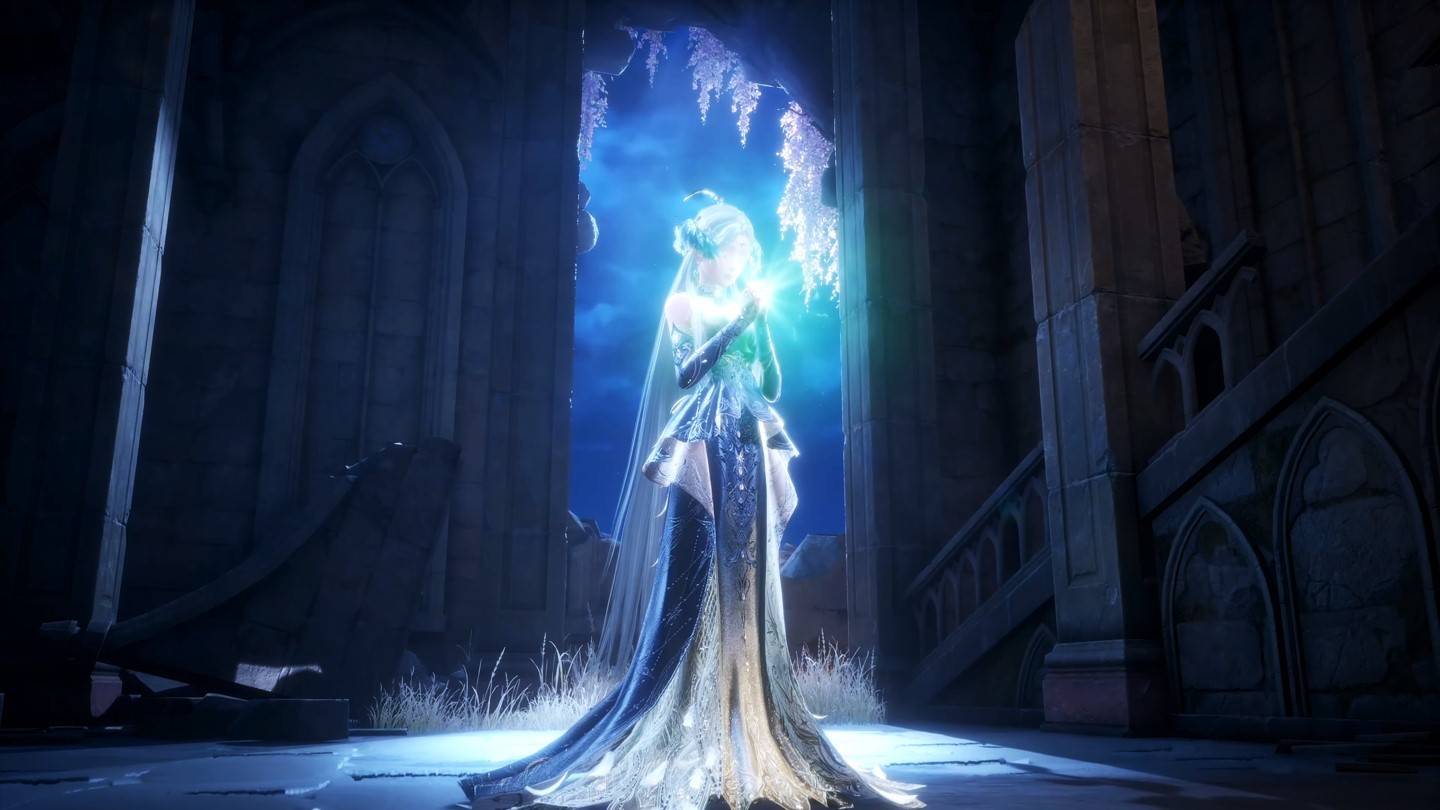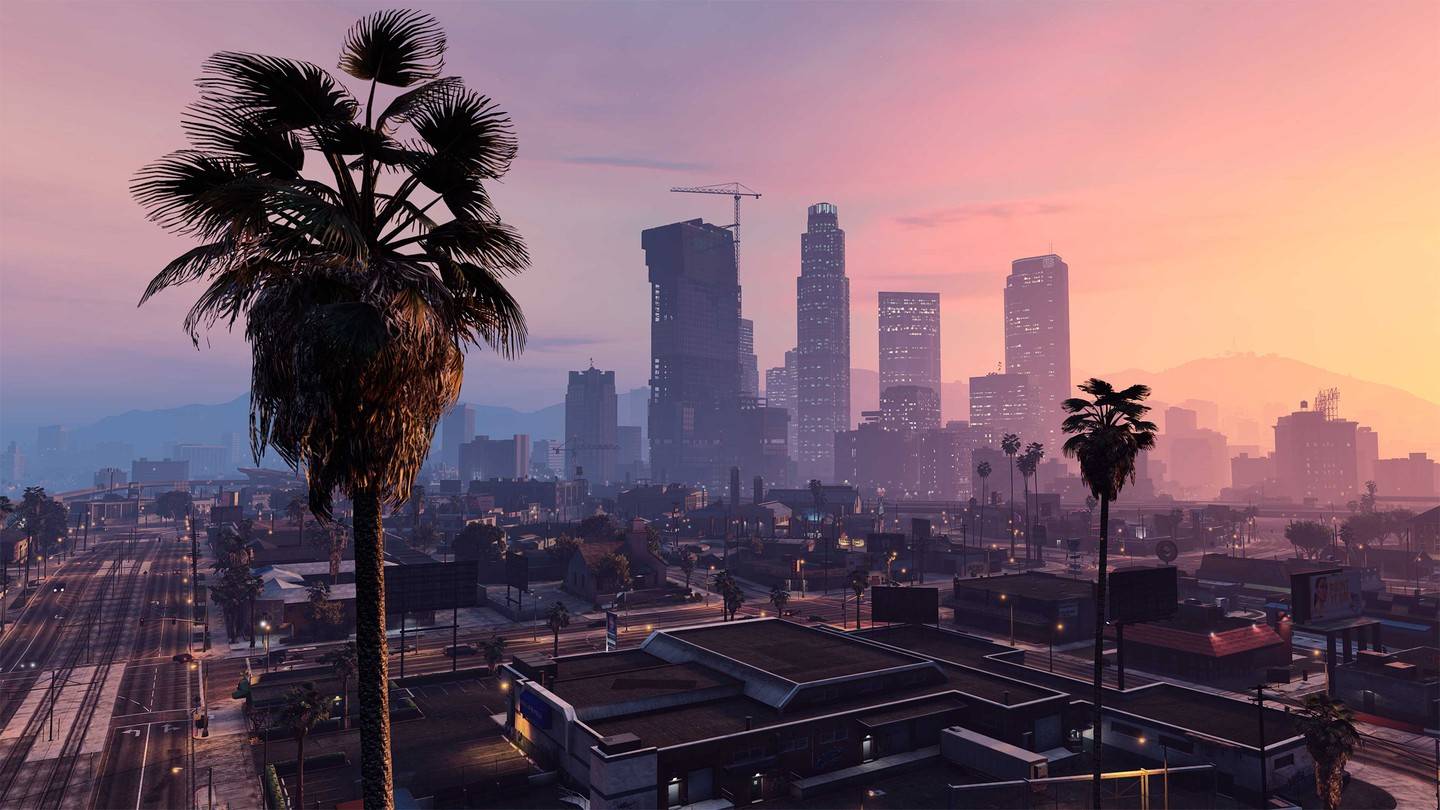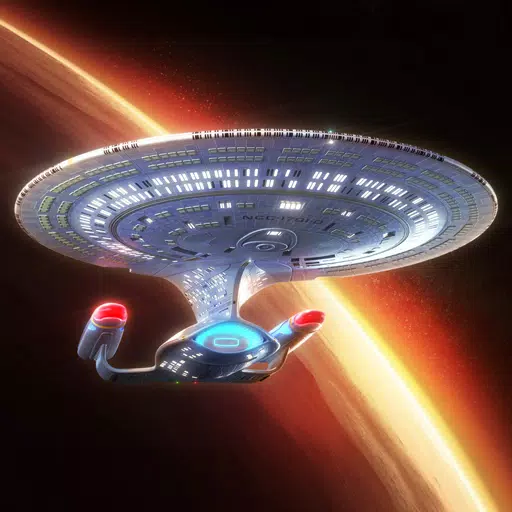Nvidia RTX 5090 Founders Edition: Performance Reviewed
Every couple of years, Nvidia launches a highly anticipated, top-tier graphics card that propels PC gaming into a new era. The Nvidia GeForce RTX 5090 is no exception, but its approach to delivering next-generation performance is notably unconventional. In many games, the performance gain over the RTX 4090 may not meet the high expectations, particularly when ignoring the impact of DLSS Frame Generation. However, with the introduction of Nvidia's next-generation DLSS technology for upscaling and frame generation, there are significant leaps in image quality and performance, surpassing what is typically seen in a generational upgrade.
The extent to which the Nvidia RTX 5090 represents an upgrade for you depends on several factors: the games you play, the resolution at which you play them, and your comfort with AI-generated frames. For those not using a 4K monitor with a 240Hz refresh rate, the upgrade might not be justified. Yet, if you have a high-end display, the AI-generated frames can offer a glimpse into the future of gaming.
Nvidia GeForce RTX 5090 – Photos
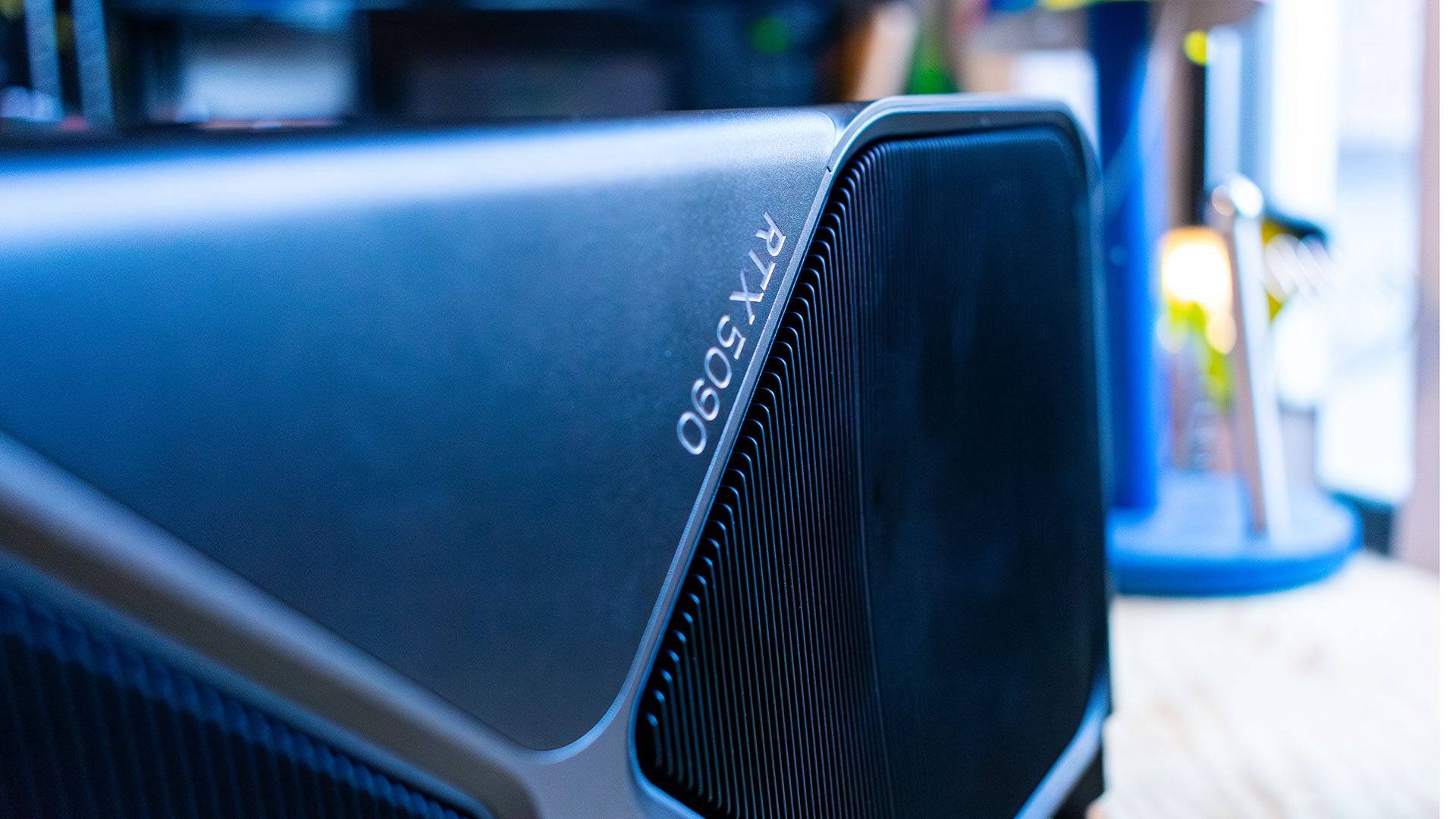
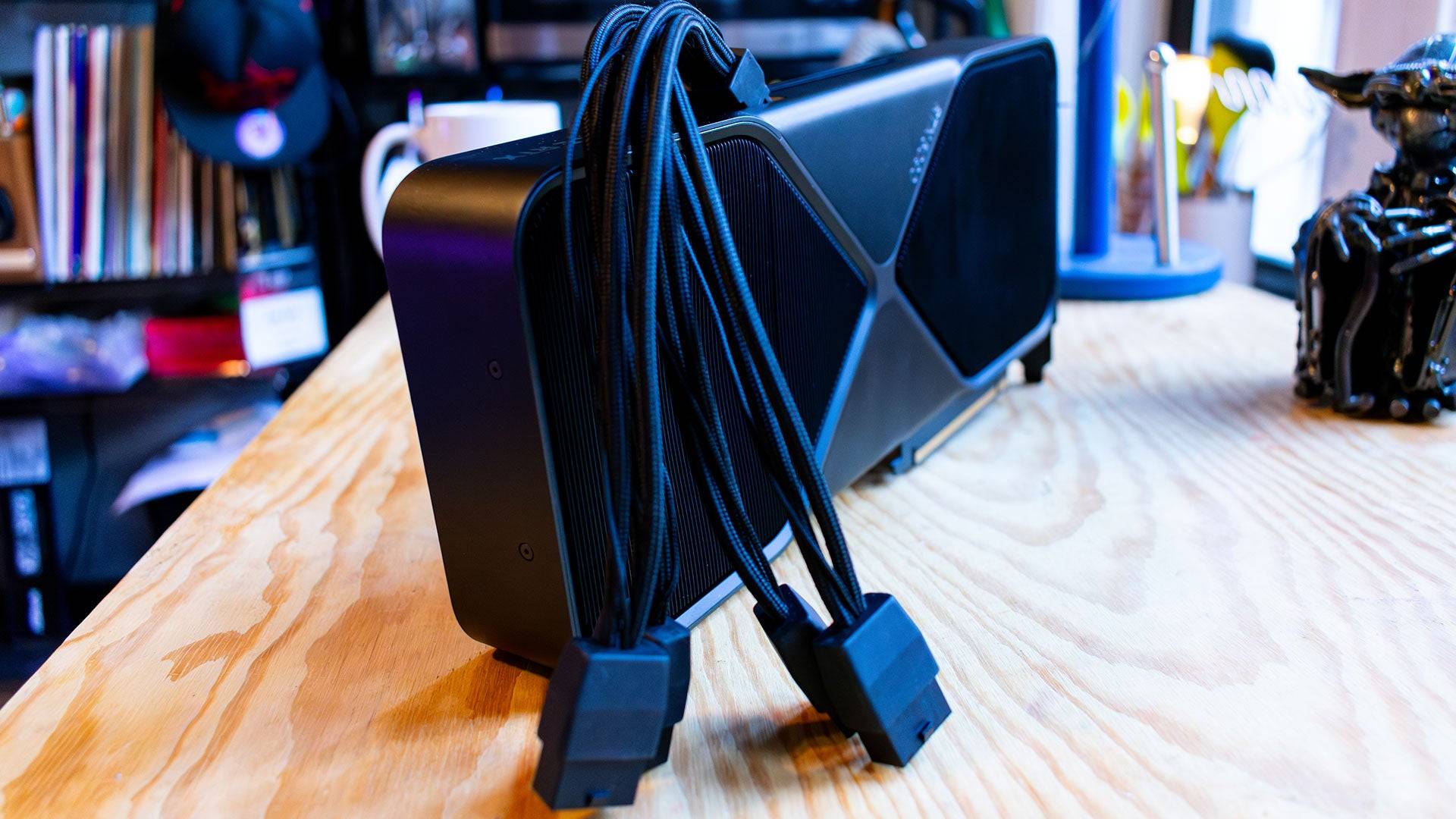 5 Images
5 Images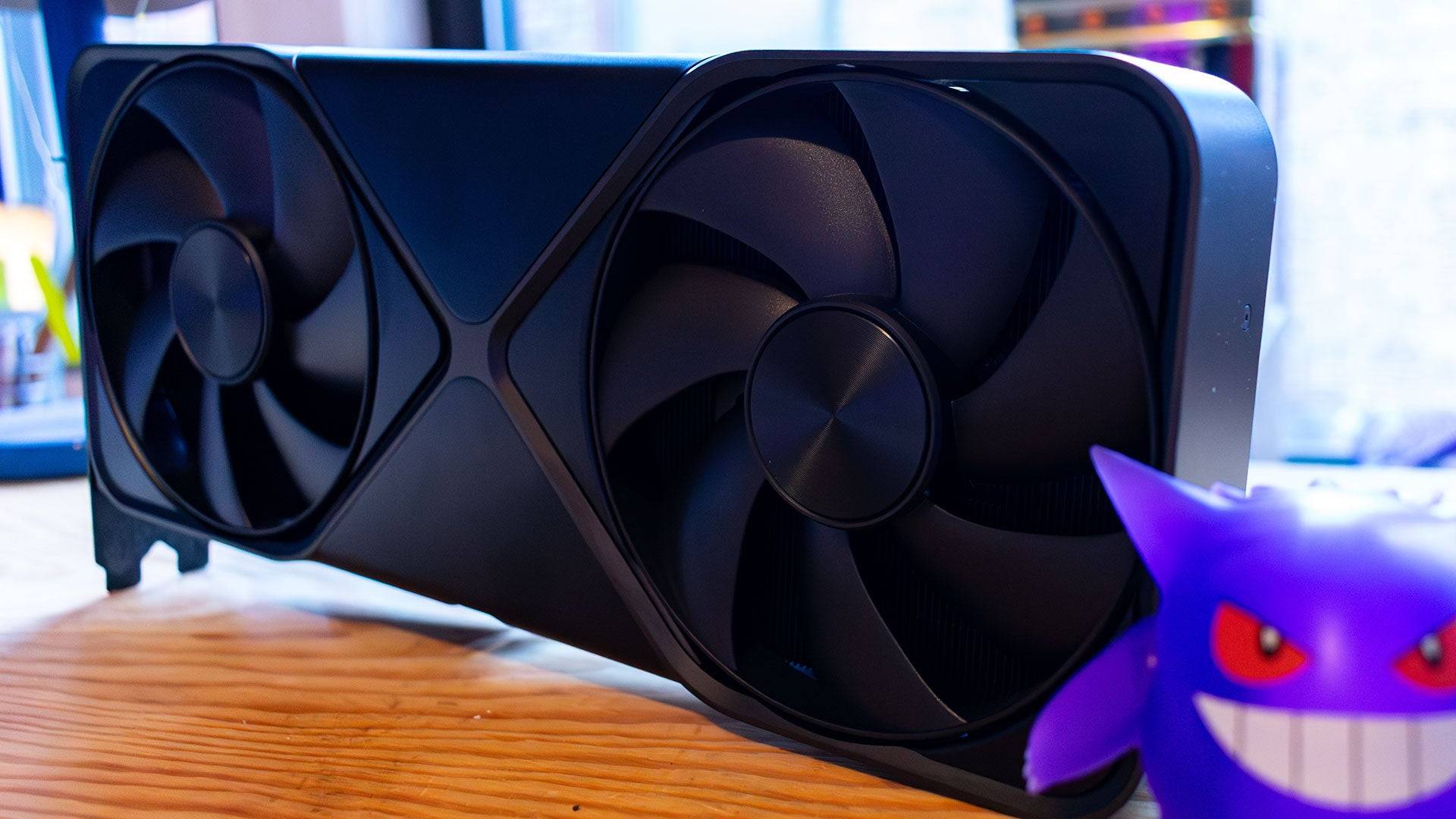
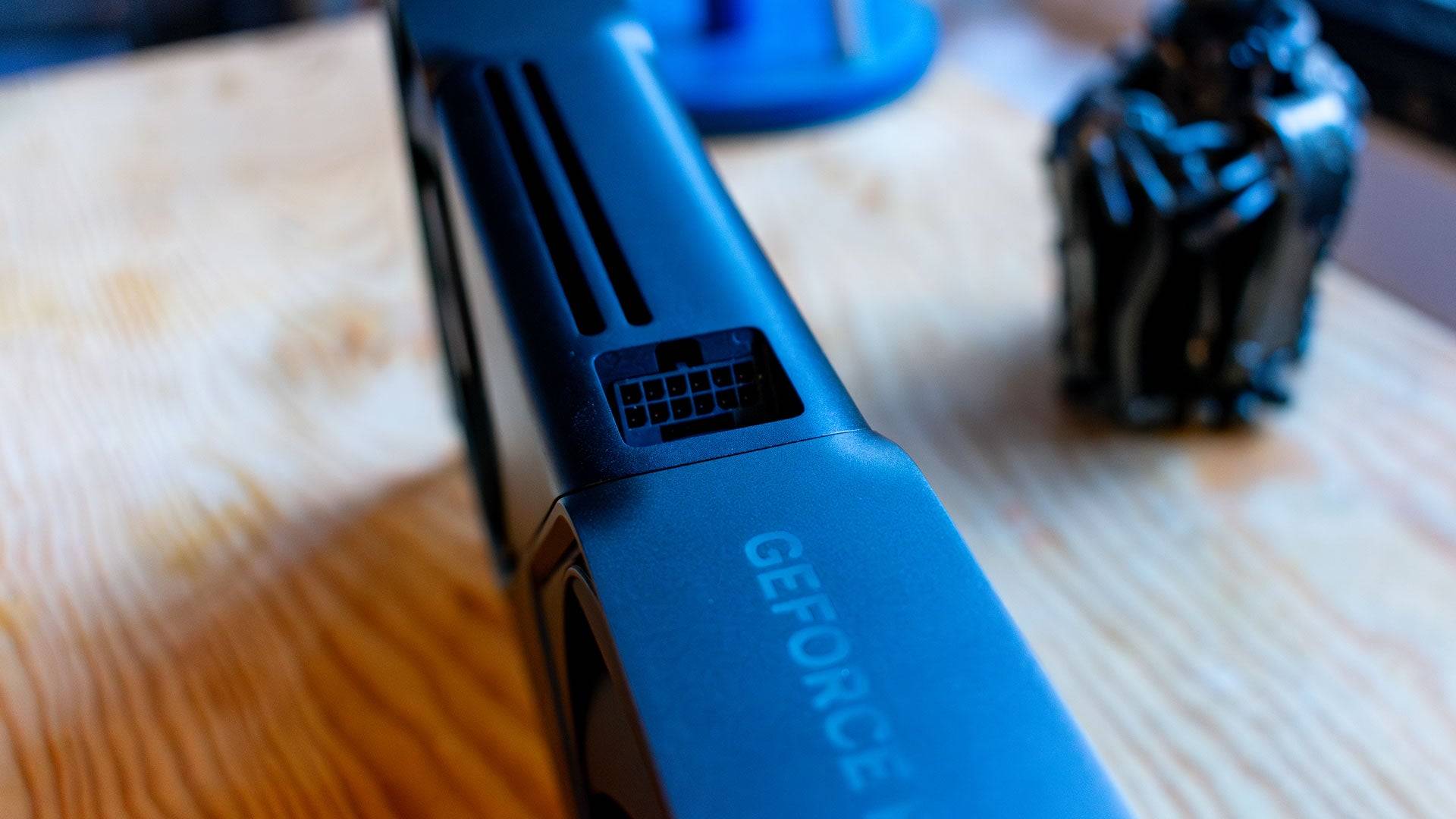
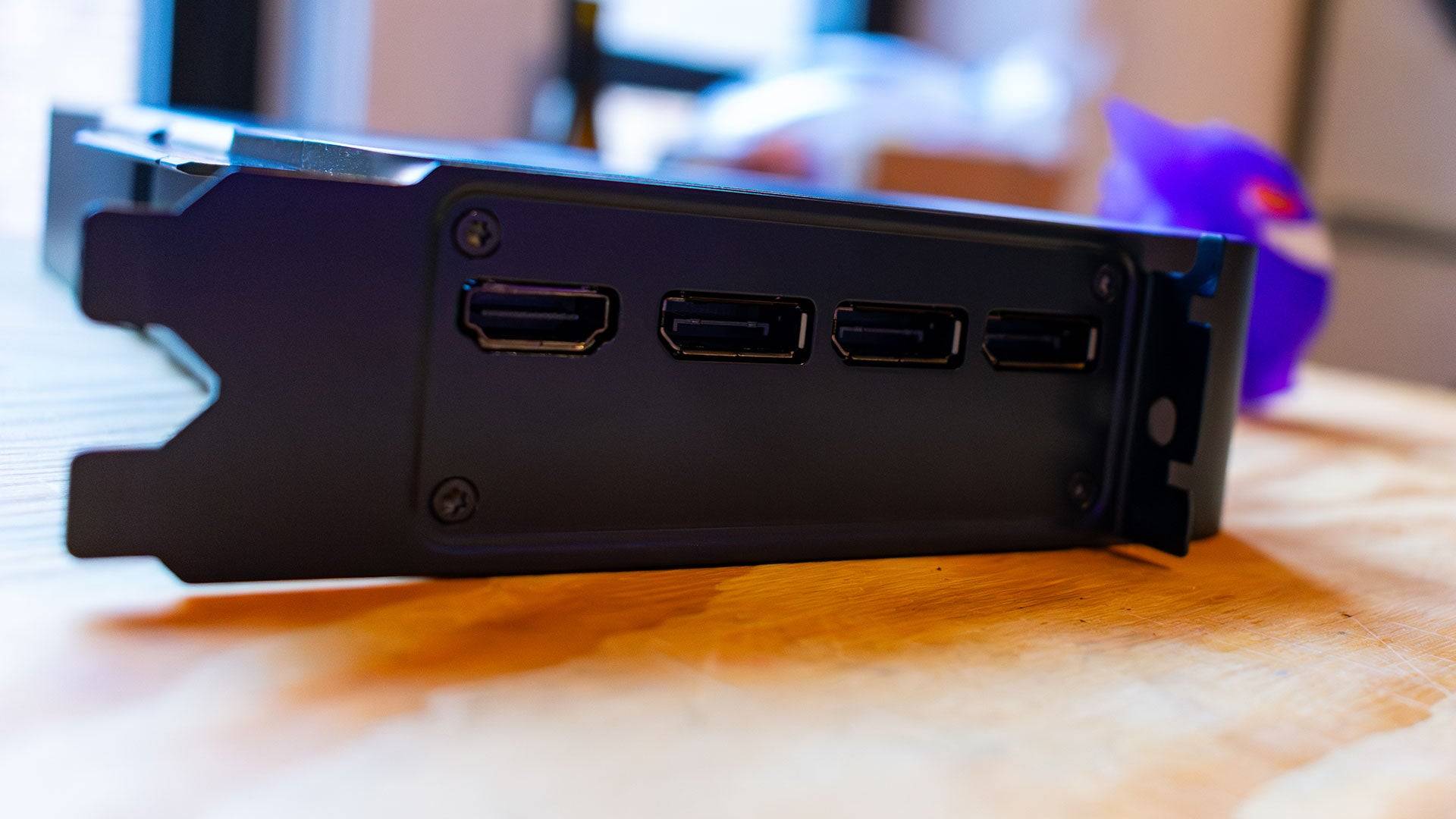
RTX 5090 – Specs and Features
The Nvidia GeForce RTX 5090 is powered by the Blackwell architecture, which is already driving advanced AI models in data centers and supercomputers. This architecture is tailored to enhance AI performance, but Nvidia has also improved the traditional aspects of the card.
The RTX 5090 incorporates more Streaming Multiprocessors (SMs) within the same Graphics Processing Clusters (GPCs), resulting in a 32% increase in CUDA cores—from 16,384 in the RTX 4090 to 21,760. This upgrade significantly boosts raw gaming performance. Each SM includes four Tensor Cores and one RT Core, totaling 680 Tensor Cores and 170 RT Cores, compared to the RTX 4090's 512 Tensor Cores and 128 RT Cores. The 5th-generation Tensor Cores now support FP4 operations, enhancing AI performance while reducing VRAM dependency.
The card is equipped with 32GB of GDDR7 VRAM, a step up from the GDDR6X in the RTX 4090, promising faster and more power-efficient memory. However, with a power requirement of 575W, the RTX 5090 prioritizes performance over power efficiency.
Nvidia has revamped the DLSS algorithm to utilize a Transformer Neural Network (TNN) instead of a Convolutional Neural Network (CNN), improving image quality and reducing issues like ghosting. Furthermore, the introduction of Multi-Frame Generation enhances the frame generation technology from the RTX 4090, allowing for smoother gameplay by generating multiple frames from each rendered image. This feature is best utilized when you're already achieving a decent frame rate.
Purchasing Guide
The Nvidia GeForce RTX 5090 will be available starting January 30, with the Founders Edition priced at $1,999. Be aware that third-party versions may cost significantly more.
The Founders Edition
Despite requiring 575W of power, the RTX 5090 Founders Edition features a compact dual-slot design with a dual-fan configuration. This design is a departure from the larger, triple-slot designs of previous models like the RTX 4090 and RTX 3090. During testing, the card's temperature peaked at 86°C, which is higher than the RTX 4090's 80°C but still within safe limits.
The RTX 5090 uses a smaller PCB and a unique cooling system where air is drawn in from the bottom and expelled through the top, without exhaust vents under the output ports. The card maintains the aesthetic of recent Nvidia designs, with a silver 'X' and gunmetal-gray chassis, complemented by a white LED 'GeForce RTX' logo.
The card uses a new 12V-2x6 power connector, which, while similar to the previous 12VHPWR, aims to be more efficient. Nvidia includes an adapter that converts four 8-pin PCIe connectors to meet the 575W demand. The new angled connector placement enhances ease of installation and appears more secure.
This design makes the RTX 5090 suitable for smaller PC builds, although third-party models may be larger.
DLSS 4: Fake Frames?
Nvidia claims the RTX 5090 can boost performance by up to 8x, primarily through its ability to generate additional frames. DLSS 4 introduces Multi-Frame Generation, utilizing an AI Management Processor (AMP) core to efficiently manage workload distribution on the GPU. This technology, combined with 5th-generation Tensor Cores, is 40% faster and requires 30% less memory than its predecessor, generating three AI frames per rendered frame.
To mitigate latency, Nvidia employs a Flip Metering algorithm, ensuring smooth frame pacing. While Multi-Frame Generation isn't a universal solution, it excels when paired with DLSS upscaling and a high baseline frame rate. At launch, DLSS 4 will be supported in numerous games, including Cyberpunk 2077 and Star Wars Outlaws, where it significantly boosts frame rates at 4K resolution.
Despite potential skepticism about 'Fake Frames,' Multi-Frame Generation performs well, offering genuine benefits for users with high-refresh, high-resolution displays. However, its effectiveness may vary across games.
RTX 5090 – Performance
The RTX 5090 showcases impressive performance gains in 3DMark, with up to a 42% increase over the RTX 4090. However, in real-world gaming scenarios, CPU bottlenecks often limit its potential, particularly at 4K resolution, even when paired with a top-tier CPU like the Ryzen 7 9800X3D.
In games like Call of Duty Black Ops 6 and Cyberpunk 2077, the RTX 5090 only offers about a 10% performance increase over the RTX 4090, which is modest for a next-generation card. In Metro Exodus: Enhanced Edition, the RTX 5090 achieves a 25% improvement, while in Red Dead Redemption 2, the gain is just 6%. Total War: Warhammer 3, without ray tracing or upscaling, shows a more substantial 35% uplift.
Notably, in Assassin's Creed Mirage, the RTX 5090 underperformed due to a possible driver issue, highlighting the importance of software optimization. In Black Myth: Wukong and Forza Horizon 5, performance improvements were more moderate, indicating that the RTX 5090's full potential may not be realized in current games.
Nvidia GeForce RTX 5090 – Benchmarks
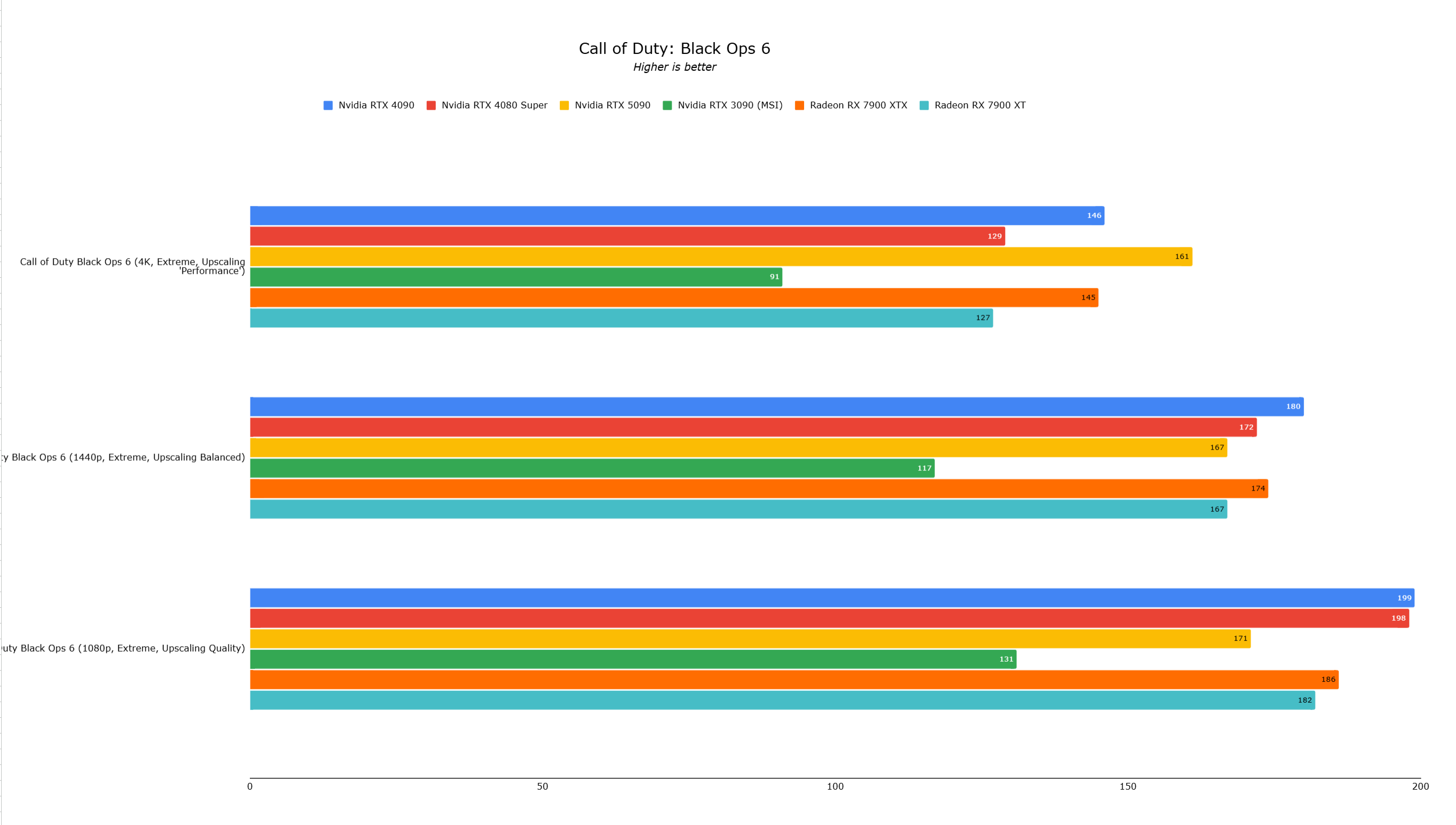
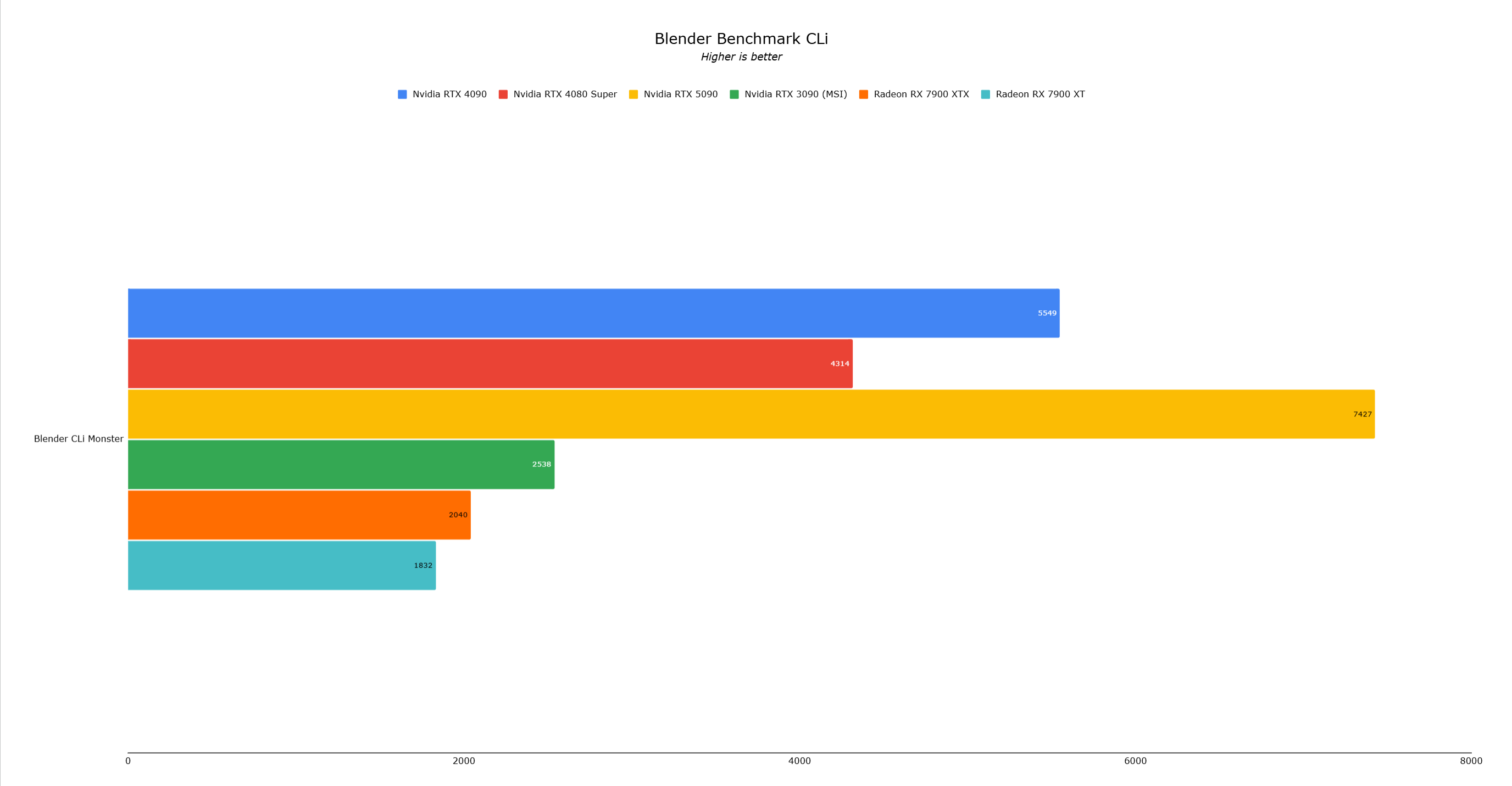 14 Images
14 Images
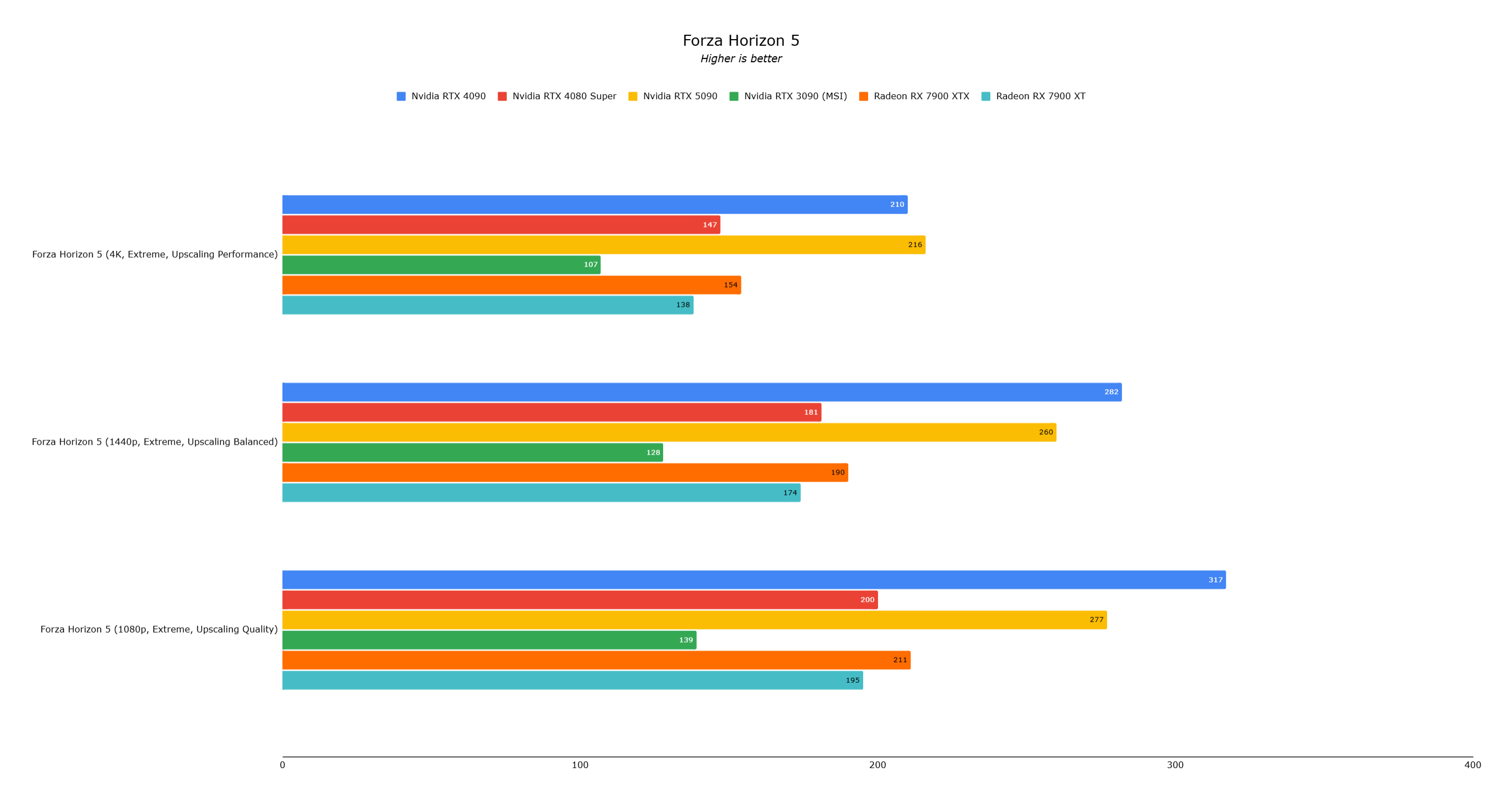
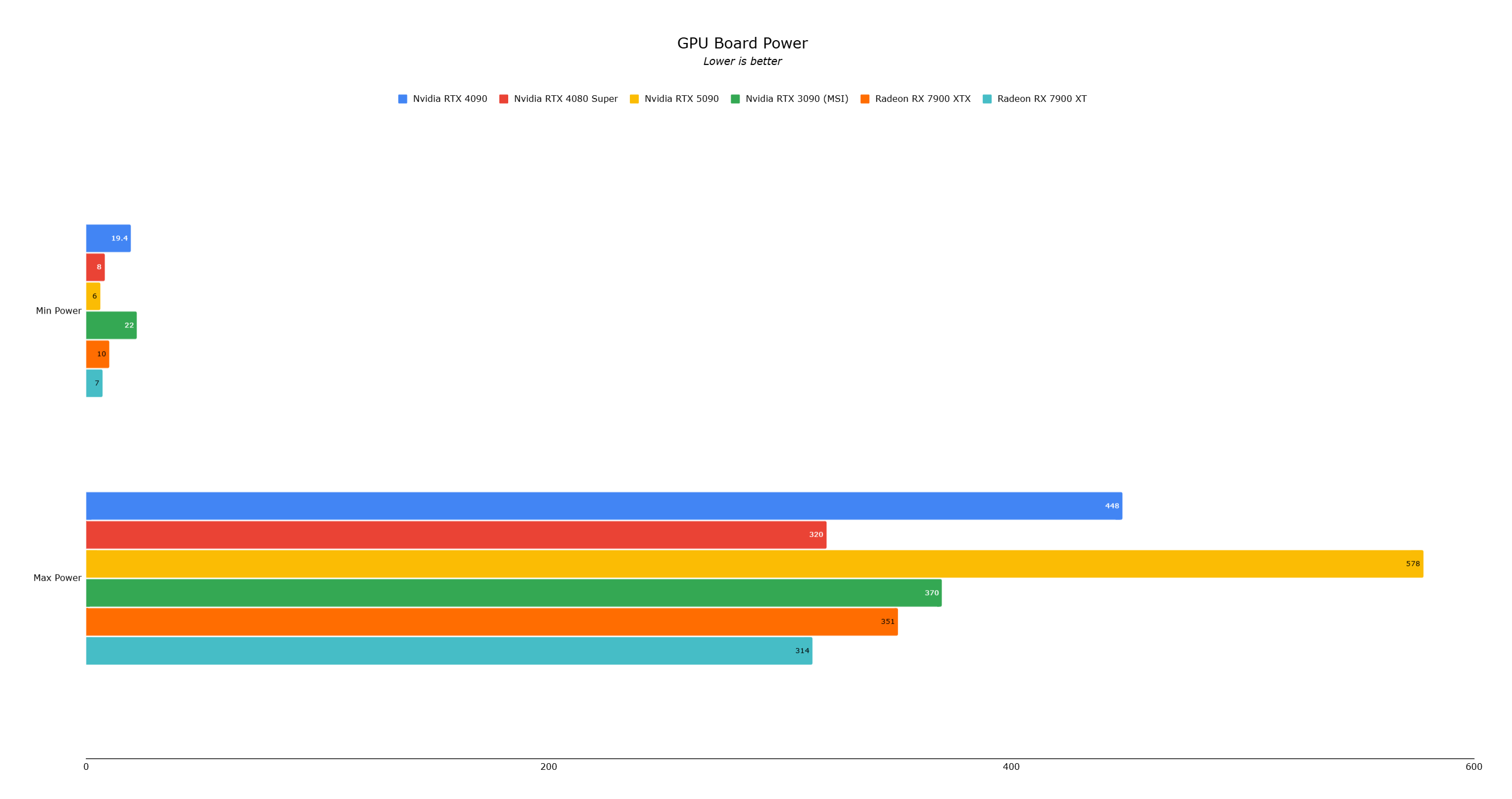
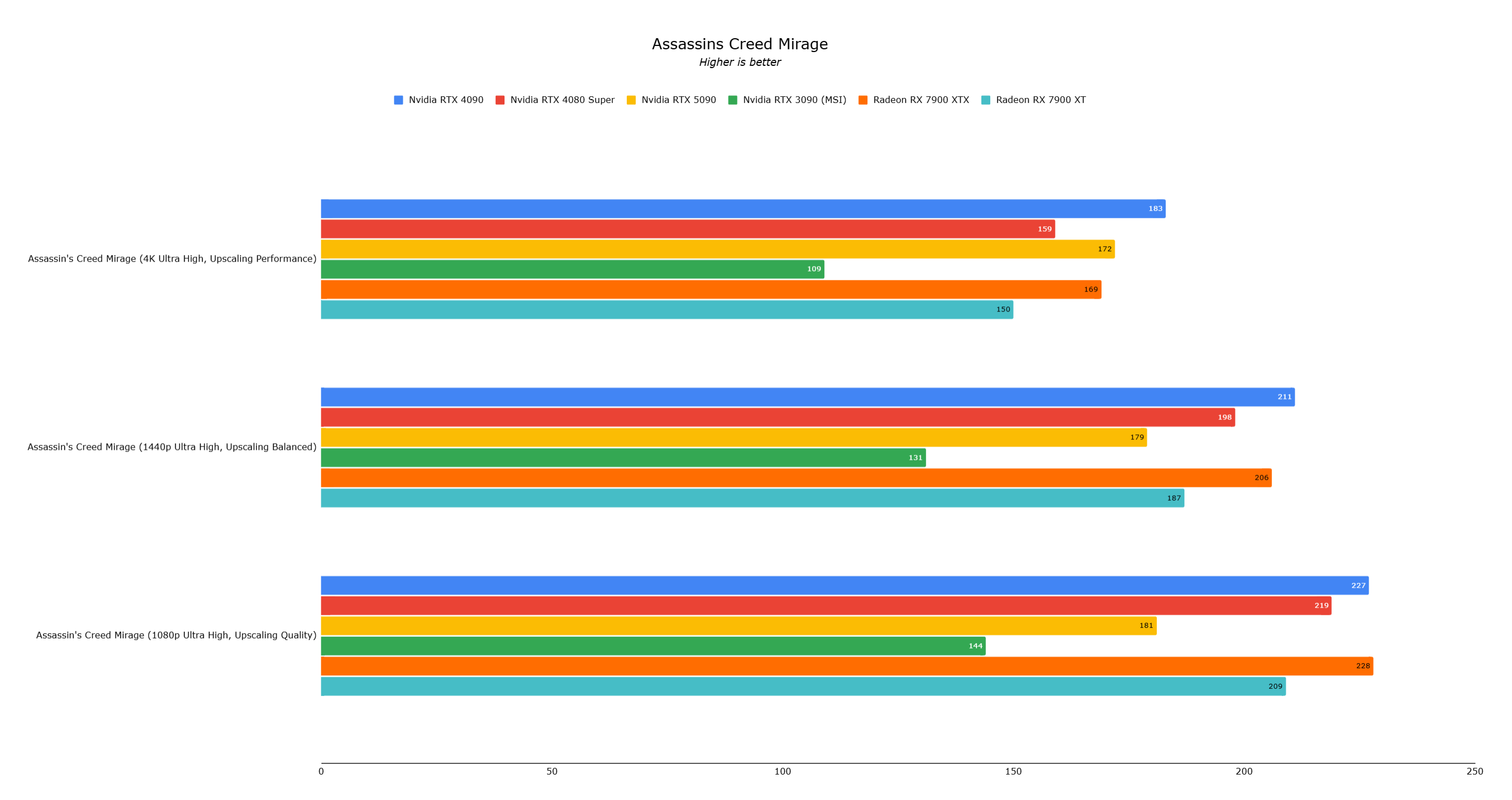
Despite its impressive raw power, the RTX 5090's performance in many current games is hindered by CPU limitations and game optimizations. Nvidia's focus on AI-powered gaming with DLSS 4 suggests that the RTX 5090 is designed for future-proofing and leveraging upcoming AI technologies. While the RTX 4090 remains sufficient for most gamers, the RTX 5090 is a forward-looking investment for those at the cutting edge of PC gaming.
Latest Articles














